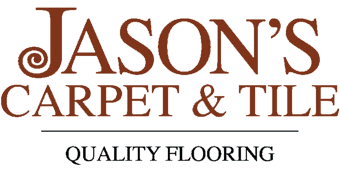Blog > Understanding What Exactly You Are Walking On
Understanding What Exactly You Are Walking On
Wednesday, May 22, 2024

Flooring is an essential part of any building's interior, serving both functional and aesthetic purposes. But did you ever wonder what makes up a floor? Understanding the various components of flooring can help in selecting the right type for different spaces and needs. Here’s a detailed look at the different components and aspects of flooring:
Subfloor
The subfloor is the structural layer that provides support to the finished flooring. It is usually made of plywood, oriented strand board (OSB), or concrete. The subfloor must be stable and level to ensure the durability and performance of the finished floor.
Underlayment
The underlayment is a thin layer of material placed between the subfloor and the finished floor. Its purpose is to:
- Provide a smooth, level surface for the finished flooring.
- Act as a moisture barrier.
- Offer sound insulation.
- Improve comfort underfoot.
- Common materials for underlayment include foam, cork, rubber, and plywood.
Finished Flooring
This is the topmost layer that you walk on, and it comes in a wide variety of materials and styles. The choice of finished flooring depends on factors such as aesthetics, durability, maintenance, and cost. Common types of finished flooring include:
Hardwood
Solid Hardwood: Made from solid wood and can be sanded and refinished multiple times.
Engineered Hardwood: Composed of a top layer of real wood veneer bonded to multiple layers of plywood or HDF (high-density fiberboard), making it more stable than solid hardwood.
Laminate
Laminate flooring is a synthetic product that mimics the look of wood, stone, or tile. It consists of a wear layer, a photographic layer, an HDF core, and a backing layer. It is durable, easy to install, and cost-effective.
Vinyl
Vinyl flooring is available in sheets, planks, or tiles and is known for its water resistance, durability, and low maintenance. Types include:
Luxury Vinyl Tile (LVT): Mimics natural materials and is thicker and more durable.
Vinyl Plank Flooring (VPF): Resembles hardwood planks and is easy to install.
Tile
Tile flooring is made from materials like ceramic, porcelain, or natural stone (e.g., marble, granite, slate). Tiles are durable, water-resistant, and suitable for high-moisture areas such as bathrooms and kitchens.
Carpet
Carpet is a soft flooring option made from fibers such as wool, nylon, polyester, or olefin. It is available in various styles, including cut pile, loop pile, and a combination of both (cut and loop).
Molding and Trim
Molding and trim are used to finish the edges of the flooring and cover transitions between different types of flooring. These include:
Baseboards: Cover the joint between the wall and the floor.
Quarter Round: A molding that covers the expansion gap between the floor and the wall.
Transition Strips: Used where two different types of flooring meet (e.g., tile to carpet).
Adhesives and Fasteners
Depending on the type of flooring, different adhesives and fasteners may be required. For example:
Nails or Staples: Used for solid hardwood.
Glue: Used for vinyl, engineered wood, and some types of tile.
Click-Lock Systems: Used for floating floors such as laminate and some engineered hardwoods, where the pieces snap together without adhesive.
Moisture Barriers
In areas prone to moisture a moisture barrier may be necessary to protect the subfloor and finished floor. This is often a plastic sheeting placed over the subfloor before installation of the underlayment and finished flooring.
Each component of flooring plays a crucial role in the overall performance and longevity of the floor. Selecting the right combination of subfloor, underlayment, finished flooring, and additional components like trim and adhesives is essential for achieving a functional, durable, and aesthetically pleasing floor. To learn more detail on any or all of these components that make up a floor that we stand on each and everyday call 954-231-4487 or visit https://www.jasonscarpetandtile.com/.
